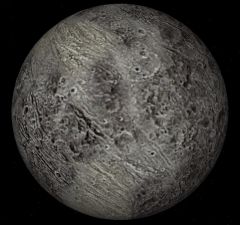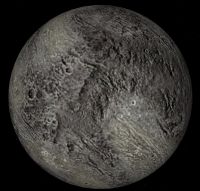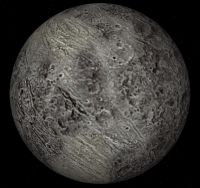Difference between revisions of "Megaclite"
Jump to navigation
Jump to search
(Arvil moved page User:Arvil/Sandbox02 to Praxidike: Move to article page.) Tag: New redirect |
(Added content.) |
||
| (2 intermediate revisions by the same user not shown) | |||
| Line 1: | Line 1: | ||
| − | + | {| cellpadding="2" cellspacing="0" style="margin:25px 0 0 10px; border:3px solid lightsteelblue;width:250px; font-size:90%; font-family:'Arial','Helvetica'; float: right; clear: right;"Template in Orbiter" | |
| + | !bgcolor="lightsteelblue" colspan="2" align="center" |Megaclite | ||
| + | |- | ||
| + | |colspan="2" align="center"|[[Image:Megaclite-outerplanets060929basezip-Orbiter2006P1.jpg|240px]] | ||
| + | |- | ||
| + | |colspan="2" align="center"|'''Megaclite from outer_planets-060929-base.zip in Orbiter 2006P1''' | ||
| + | |- | ||
| + | !bgcolor="lightsteelblue" colspan="2"|Designation | ||
| + | |- | ||
| + | |Name||align="right"|Megaclite | ||
| + | |- | ||
| + | |width="30%"|Reference body||align="right" width="30%"|Jupiter | ||
| + | |- | ||
| + | !bgcolor="lightsteelblue" colspan="2"|Planetary mean orbits | ||
| + | |- | ||
| + | |width="30%"|Epoch||align="right" width="50%"|2006.64779710751 | ||
| + | |- | ||
| + | |width="30%"|Semimajor axis (a)||align="right" width="50%"|22960433014.3103 m | ||
| + | |- | ||
| + | |width="30%"|Eccentricity (e)||align="right" width="30%"|0.461974819877206 | ||
| + | |- | ||
| + | |width="30%"|Inclination (i)||align="right" width="30%"|144.60552403088° <br> (2.52384251091063 radian) | ||
| + | |- | ||
| + | |width="30%"|Longitude of the ascending node (LAN, ☊)||align="right" width="30%"|322.887502362581° <br> (5.635450029768 radian) | ||
| + | |- | ||
| + | |width="30%"|Longitude of periapsis (ϖ)||align="right" width="30%"|628.602266539543° <br> (10.971179236614 radian) | ||
| + | |- | ||
| + | |width="30%"|Mean longitude (L)||align="right" width="30%"|654.955305161025° <br> (11.4311265284641 radian) | ||
| + | |- | ||
| + | !bgcolor="lightsteelblue" colspan="2"|Selected physical parameters | ||
| + | |- | ||
| + | |width="30%"|Mean radius||align="right" width="30%"|2690 m | ||
| + | |- | ||
| + | |width="30%"|Mass||align="right" width="30%"|3.998×10<sup>15</sup> kg | ||
| + | |- | ||
| + | |width="30%"|SidRotPeriod||align="right" width="30%"|65043648 sec (2.0611 years) | ||
| + | |- | ||
| + | |width="30%"|SidRotOffset||align="right" width="30%"|0 | ||
| + | |- | ||
| + | |width="30%"|Obliquity||align="right" width="30%"|0 | ||
| + | |- | ||
| + | |width="30%"|LAN||align="right" width="30%"|0 | ||
| + | |- | ||
| + | |width="30%"|Note||align="right" width="30%"|*Elements given are from Megaclite.cfg (outer_planets-060929-base.zip) | ||
| + | |} | ||
| + | |||
| + | '''Megaclite (Jupiter XIX S/2000 J 8)''' is a retrograde irregular satellite of [[Jupiter]]. Discovered by [[w:Scott S. Sheppard|Scott Sheppard]] and his team on 25 November 2000 at the [[w:Mauna Kea Observatory|Mauna Kea Observatory]], it was named after [[w:Megaclite|Megaclite]], mother of [[w:Thebe|Thebe]] and [[w:Locrus|Locrus]]. | ||
| + | |||
| + | == Megaclite in Orbiter == | ||
| + | Megaclite was introduced to [[Orbiter]] by the add-on ''outerplanets-050125.zip'' in January 2005. | ||
| + | |||
| + | {|class="wikitable sortable” style="text-align: center" | ||
| + | |- | ||
| + | |colspan="8"|<center>'''Orbiter versions and add-ons which include Megaclite'''</center> | ||
| + | |- | ||
| + | !Add-on!!Source!!Version!!Author!!Type!!Release Date!!Compatibility!!Wiki article | ||
| + | |- | ||
| + | |[https://library.avsim.net/esearch.php?DLID=&Name=&FileName=outer_planets-060929-base.zip&Author=&CatID=root The Outer Planets 060929 Base]||AVSIM||||Rolf Keibel<br>Carl Romanik<br>Tony Dunn||Scenery||30 September 2006||Orbiter 2006-P1|| | ||
| + | |- | ||
| + | |[https://library.avsim.net/esearch.php?DLID=&Name=&FileName=outerplanets-050125.zip&Author=&CatID=root The Outer Planets 050125]||AVSIM||050125||Rolf Keibel<br>Tony Dunn||Scenery||26 January 2005||Orbiter 2005-P1|| | ||
| + | |} | ||
| + | |||
| + | == See also == | ||
| + | [[w:Megaclite|Megaclite]] at [[w:Wikipedia|Wikipedia]] | ||
| + | |||
| + | == Gallery == | ||
| + | <gallery widths="200" heights="200"> | ||
| + | Megaclite-outerplanets050125zip-Orbiter2005P1.jpg|<center>Megaclite from ''outerplanets-050125.zip'' in Orbiter 2005P1</center> | ||
| + | Megaclite-outerplanets060929basezip-Orbiter2006P1.jpg|<center>Megaclite from ''outerplanets-060929-base.zip'' in Orbiter 2006P1</center> | ||
| + | Megaclite-Jewitt-CFHT-annotated.gif|<center>Animation of Megaclite images by David Hewitt in December 2001<br>from Wikimedia Commons</center> | ||
| + | Animation of Megaclite around Jupiter - Polar view.gif|<center>Animation of the orbit of Megaclite, polar view<br>from Wikimedia Commons</center> | ||
| + | Animation of Megaclite around Jupiter - Equatorial view.gif|<center>Animation of the orbit of Megaclite, equatorial view<br>from Wikimedia Commons</center> | ||
| + | </gallery> | ||
| + | |||
| + | {{JupiterSat}} | ||
| + | {{SolarSystem}} | ||
| + | |||
| + | [[Category:Articles]] | ||
| + | [[Category:Celestial bodies]] | ||
| + | [[Category:Solar System]] | ||
| + | [[Category:Natural satellites]] | ||
| + | [[Category:Satellites of Jupiter]] | ||
| + | |||
| + | {{Nsat-Stub}} | ||
Latest revision as of 02:46, 19 October 2024
Megaclite (Jupiter XIX S/2000 J 8) is a retrograde irregular satellite of Jupiter. Discovered by Scott Sheppard and his team on 25 November 2000 at the Mauna Kea Observatory, it was named after Megaclite, mother of Thebe and Locrus.
Megaclite in Orbiter[edit]
Megaclite was introduced to Orbiter by the add-on outerplanets-050125.zip in January 2005.
| Add-on | Source | Version | Author | Type | Release Date | Compatibility | Wiki article |
|---|---|---|---|---|---|---|---|
| The Outer Planets 060929 Base | AVSIM | Rolf Keibel Carl Romanik Tony Dunn |
Scenery | 30 September 2006 | Orbiter 2006-P1 | ||
| The Outer Planets 050125 | AVSIM | 050125 | Rolf Keibel Tony Dunn |
Scenery | 26 January 2005 | Orbiter 2005-P1 | |
See also[edit]
Gallery[edit]
| edit The Solar System | |
|---|---|
| Central star |
Sun (Sol) |
| Planets |
Mercury - Venus - Earth - Mars - Jupiter - Saturn - Uranus - Neptune |
| Natural satellites |
Moon - Phobos - Deimos - Io - Europa - Ganymede - Titan - more... |
| Add-ons |
Planets - Dwarf Planets - Small objects - Natural satellites - Alternative star systems |
 | This natural satellite related article is a stub. You can help Orbiterwiki by expanding it.
|





